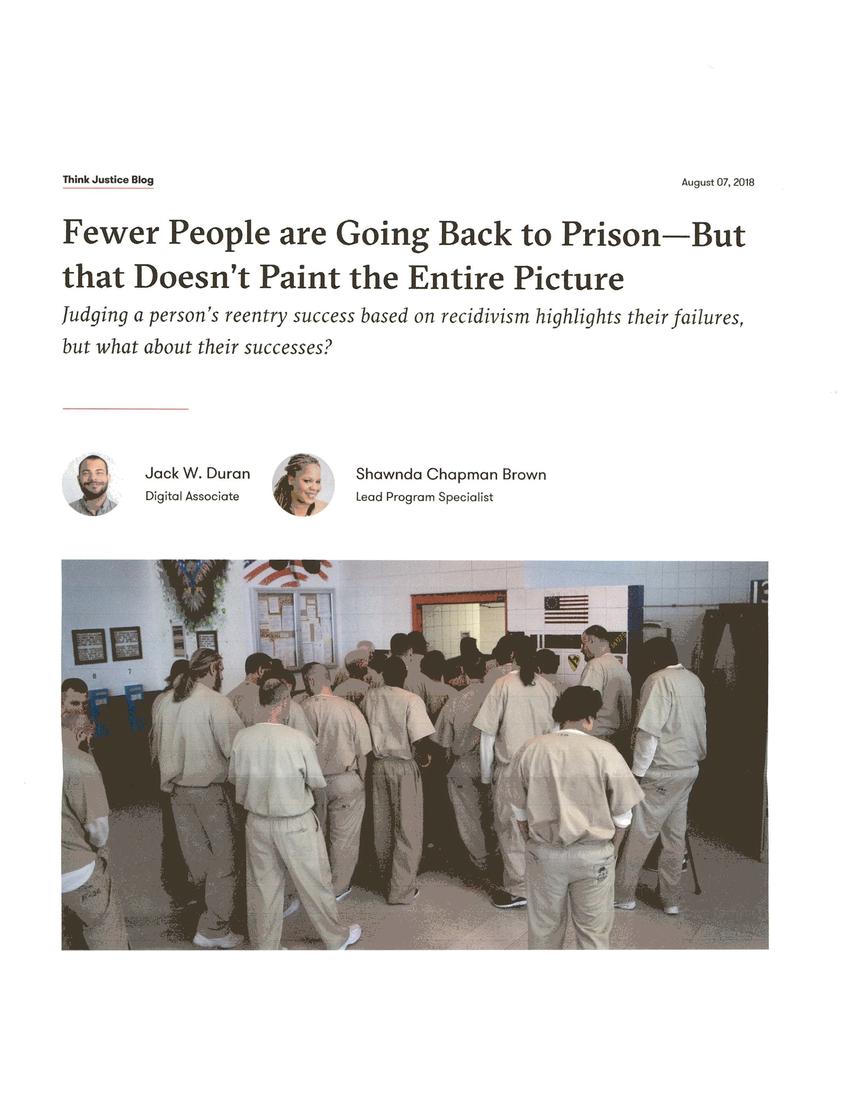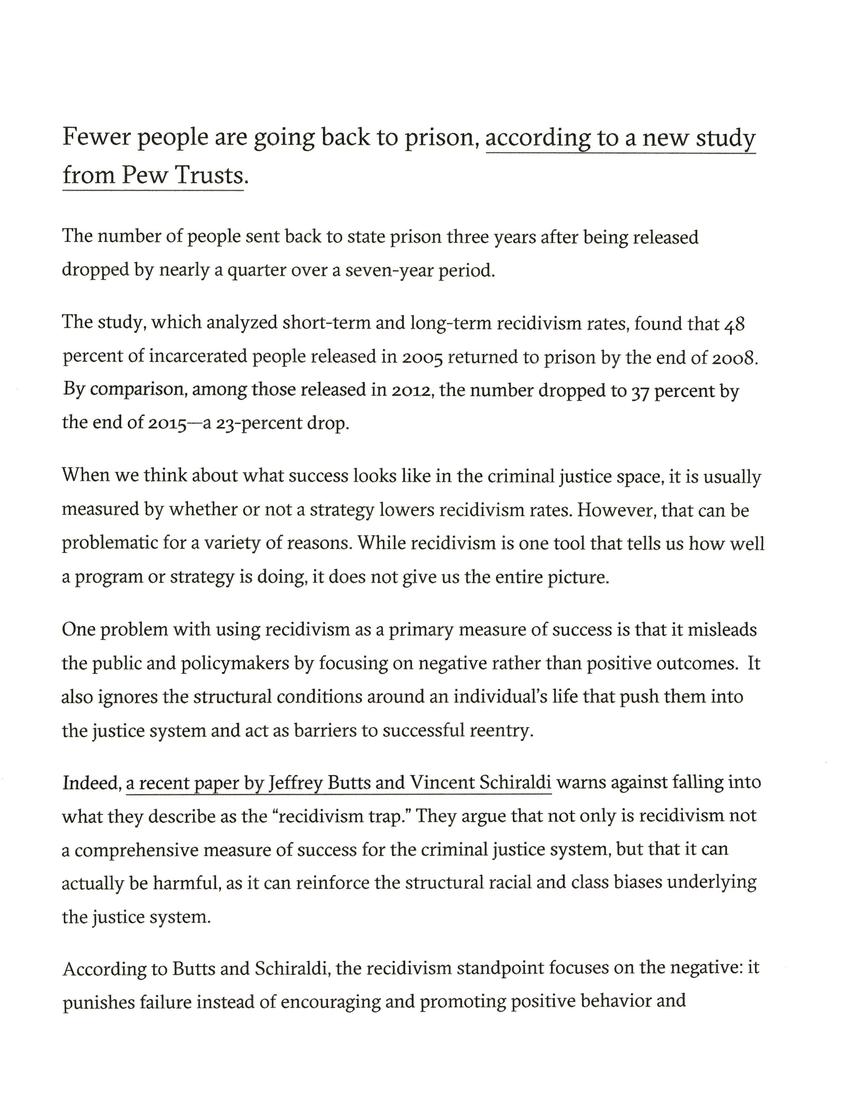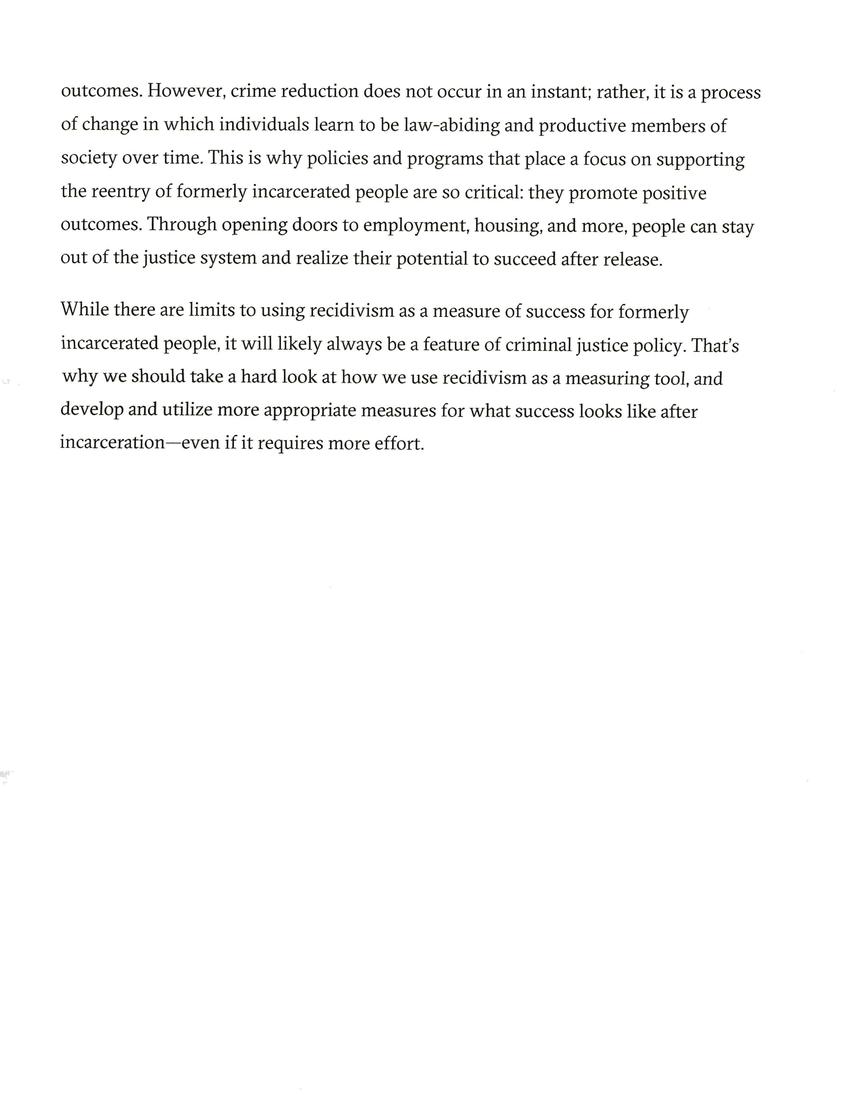
Transcription
https://www.vera.org/blog/fewer-people-are-going-back-to-prison-but-that-doesnt-paint-the-entire-picture
Fewer People are Going Back to Prison—But that Doesn’t Paint the Entire Picture
Judging a person’s reentry success based on recidivism highlights their failures, but what about their successes?
Jack W. Duran
Digital Associate
Shawnda Chapman Brown
Lead Program Specialist
Fewer people are going back to prison, according to a new study from Pew Trusts.
The number of people sent back to state prison three years after being released dropped by nearly a quarter over a seven-year period.
The study, which analyzed short-term and long-term recidivism rates, found that 48 percent of incarcerated people released in 2005 returned to prison by the end of 2008. By comparison, among those released in 2012, the number dropped to 37 percent by the end of 2015—a 23-percent drop.
When we think about what success looks like in the criminal justice space, it is usually measured by whether or not a strategy lowers recidivism rates. However, that can be problematic for a variety of reasons. While recidivism is one tool that tells us how well a program or strategy is doing, it does not give us the entire picture.
One problem with using recidivism as a primary measure of success is that it misleads the public and policymakers by focusing on negative rather than positive outcomes. It also ignores the structural conditions around an individual’s life that push them into the justice system and act as barriers to successful reentry.
Indeed, a recent paper by Jeffrey Butts and Vincent Schiraldi warns against falling into what they describe as the “recidivism trap.” They argue that not only is recidivism not a comprehensive measure of success for the criminal justice system, but that it can actually be harmful, as it can reinforce the structural racial and class biases underlying the justice system.
According to Butts and Schiraldi, the recidivism standpoint focuses on the negative: it punishes failure instead of encouraging and promoting positive behavior and outcomes. However, crime reduction does not occur in an instant; rather, it is a process of change in which individuals learn to be law-abiding and productive members of society over time. This is why policies and programs that place a focus on supporting the reentry of formerly incarcerated people are so critical: they promote positive outcomes. Through opening doors to employment, housing, and more, people can stay out of the justice system and realize their potential to succeed after release.
While there are limits to using recidivism as a measure of success for formerly incarcerated people, it will likely always be a feature of criminal justice policy. That’s why we should take a hard look at how we use recidivism as a measuring tool, and develop and utilize more appropriate measures for what success looks like after incarceration—even if it requires more effort.
Other posts by this author
|
2023 may 31

|
2023 mar 20

|
2022 aug 23

|
2022 aug 23

|
2022 aug 23

|
2022 aug 23

|
More... |




Replies